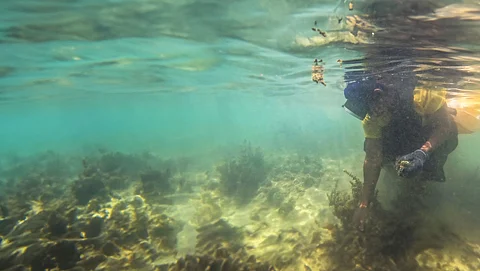

Sanjay Pereira has been fishing along the Cacra coast of Goa all his life. So when he found a reddish-black, jelly-like substance tangled in his net this past June, he immediately knew it did not belong there. “It was an exotic seaweed called Kappaphycus alvarezii, which no one had seen or heard of in the state until 2022-23, when the fisheries department carried out a trial at four locations, including Cacra, to assess its cultivation potential,” says Pereira. He was involved in the trial, at the end of which all the seaweed was removed. “It has been just a year and the seaweed has started to grow on its own here,” he says.
The clump in his net weighed around 8 kg. Other local fisherfolk have also reported similar catches. Concerned, he informed the fisheries department, but never received a response. “We have several native seaweeds, but they do not grow so rapidly. We are worried if the exotic seaweed could impact our livelihood,” says Pereira.
Kappaphycus alvarezii is a known invasive species that has already smothered coral reefs in the Gulf of Mannar in Tamil Nadu, where it was introduced for commercial cultivation two decades ago. While the seaweed is valuable for producing carrageenan, a widely used emulsifier in foods, beverages and medi-cines, and biostimulants that improve crop yields, its spread poses a serious threat to local ecosystems.
Despite the risks, India is betting big on this red algae. To expand its cultivation, Rs 640 crore has been earmarked...
This article was originally published as part of Down To Earth’s cover story on seaweed dated 16-31 October, 2024.